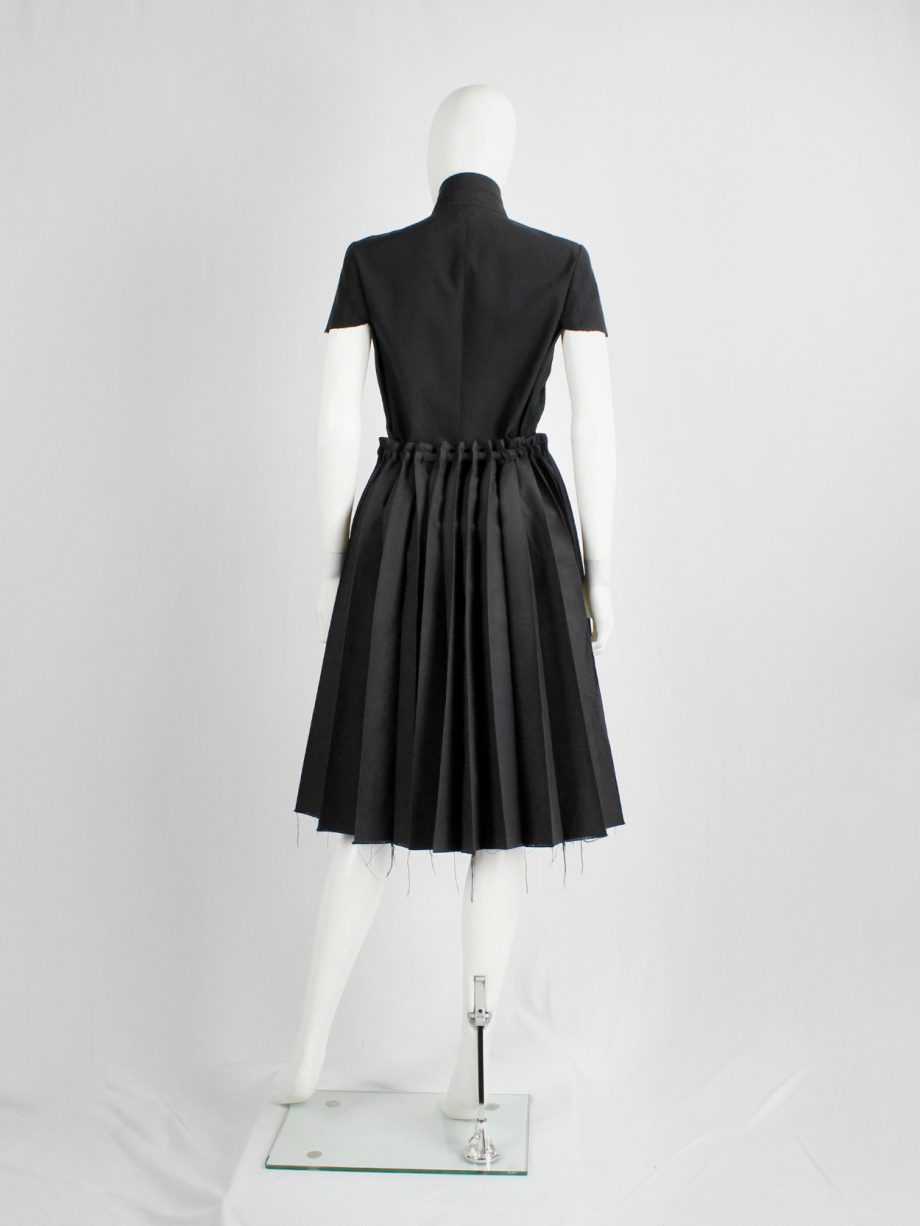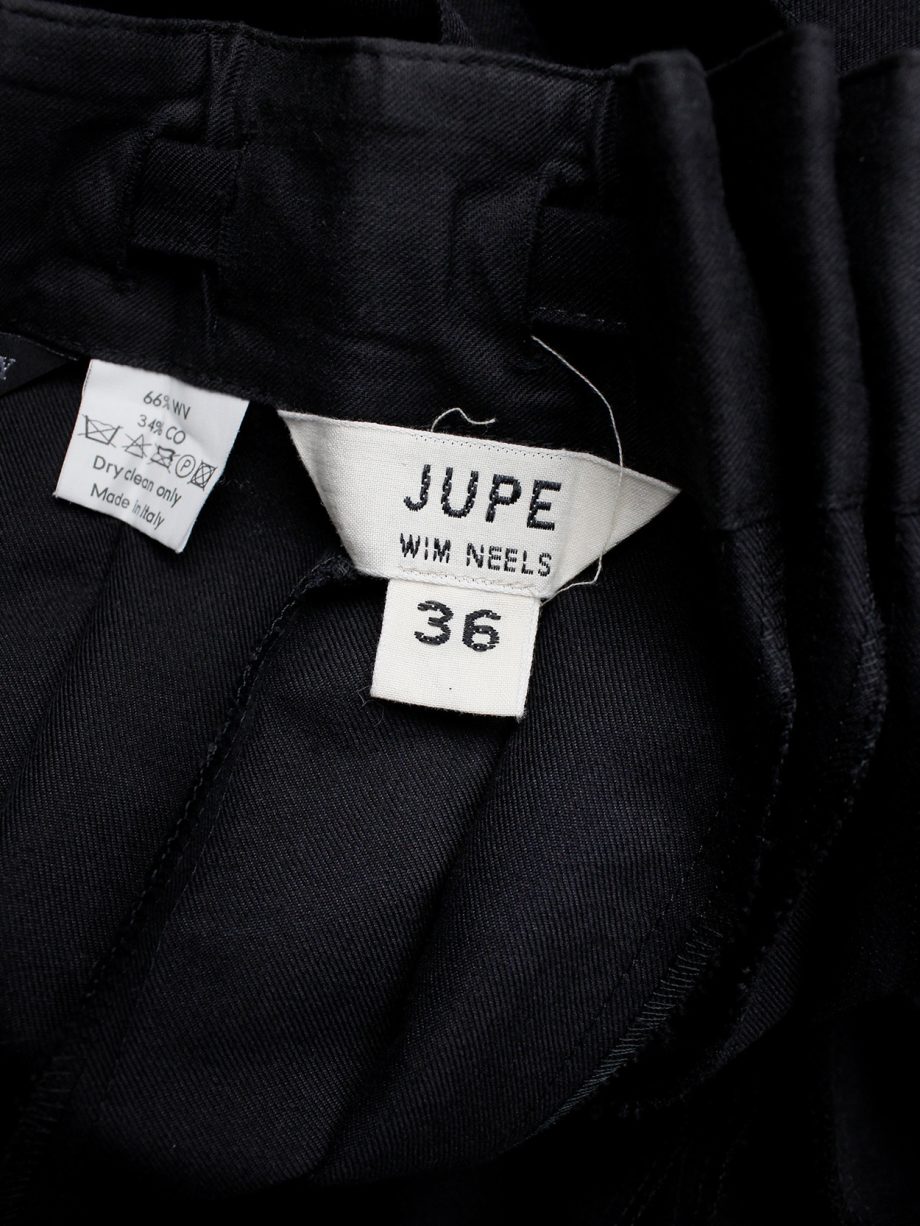Wim Neels navy pleated skirt with front buttons and slideable across the belt — 1990’s
Size: Adjustable
Waist circumference: maximum 84 cm
Length: 66 cm
Composition:
66% virgin wool
34% polyester
Details:
Dark navy skirt
Pressed accordeon pleats
The skirt is slid over the worked-in belt
Which means you can adjust the width of the pleats as you adjust the belt
Black front buttons with which you can fully open the skirt
Frayed finish at the hem
Wim Neels graduated from the Academy of Antwerp in 1988. He worked as Walter Van Beirendonck’s assistant and was a finalist for the Golden Spindle awards in 1991. His first collection of womenswear was launched in March 1991, followed by his first menswear collection in 1996. Wim Neels gives us his vision on the ‘basics’ of the western wardrobe. He produces all the pieces either men or women could ever need: suits, coats, shirts, trousers, skirts and knitwear. His garments differ from standard basics in that their cut and tailoring are absolutely superior. They look simple, but are never plain. This is fashion that tends to suggest rather than display its presence.
Condition: 4/5
Good condition
Description
Similar items
-
Comme des Garçons black long wool pencil skirt — AD 1992
-
Rick Owens LIMO burnt orange silk midi-skirt with side drape — fall 2011
-
Ann Demeulemeester black maxi skirt with spiralling buttons — fall 2010
-
Yohji Yamamoto +Noir black maxi skirt stitched outwards at the front
-
Ann Demeulemeester dark grey maxi length bias cut skirt
-
Maison Martin Margiela 6 grey denim wrap skirt with 5 pockets — spring 2000
About Wim Neels
Wim Neels, who has tailoring in his blood, graduated from the Academy of Antwerp in 1988. He worked as Walter Van Beirendonck’s assistant for 5 years and was a finalist for the Golden Spindle awards in 1991.His first collection of womenswear was launched in March 1991, followed by his first menswear collection in 1996.
Wim Neels is at his best when he gives us his vision on the ‘basics’ of the western wardrobe. He produces all the pieces either men or women could ever need: suits, coats, shirts, trousers, skirts and knitwear. His garments differ from standard basics in that their cut and tailoring are absolutely superior. They look simple, but are never plain. This is fashion that tends to suggest rather than display its presence.
His motto, ‘Past Present Future’, is applicable to both collections. Old and new techniques are used to produce the clothes. Old materials are transformed into contemporary models by his handling of them. At the same time, he uses old pattern techniques with new materials. What once was menswear is ‘mutated’ into womenswear by its styling. So the interchangeability of the two collections relates both to the use of materials and to the modelling. The same materials are often used for both collections, ranging from rough — like wool, to soft — like silk. There are identical items in both collections in terms of design. It’s up to the wearer to decide to what extent the garment is masculine or feminine. The pieces from both collections are therefore easy to combine. In the end, he sees them both in the same way and works them out with the same vision.
The only detail that makes it easy for the cognoscenti to identify a top immediately as a Wim Neels design is the label sewn on the outside; rather than conveying the name of a posh fashion house, it states matter-of-factly what the garment is: Blouson. Caban. Cache-Poussière.















































